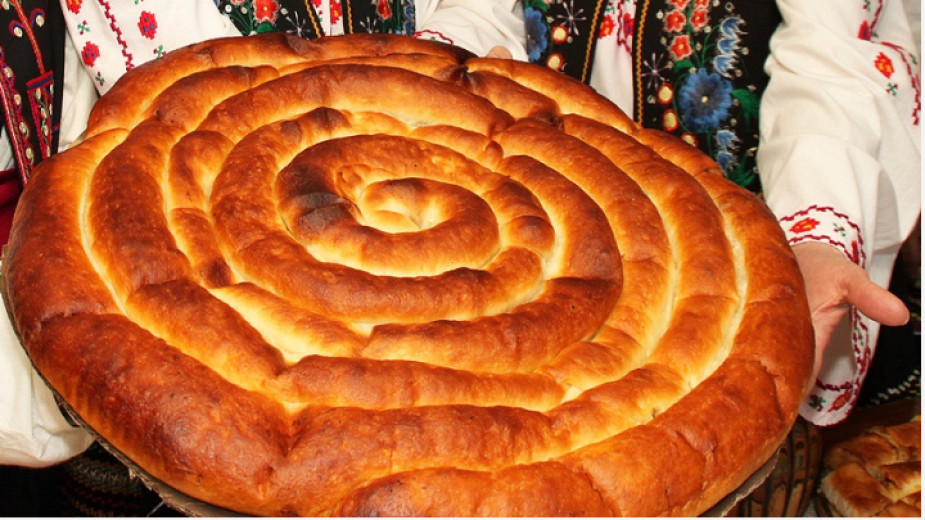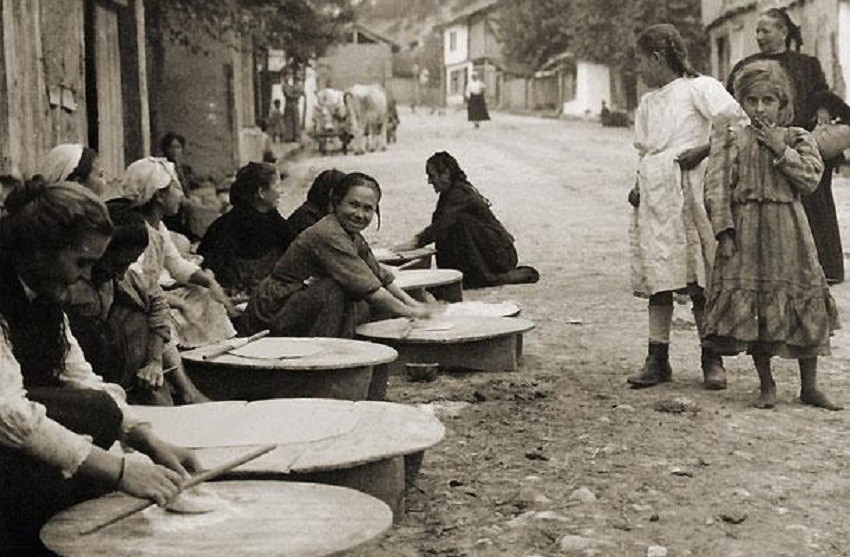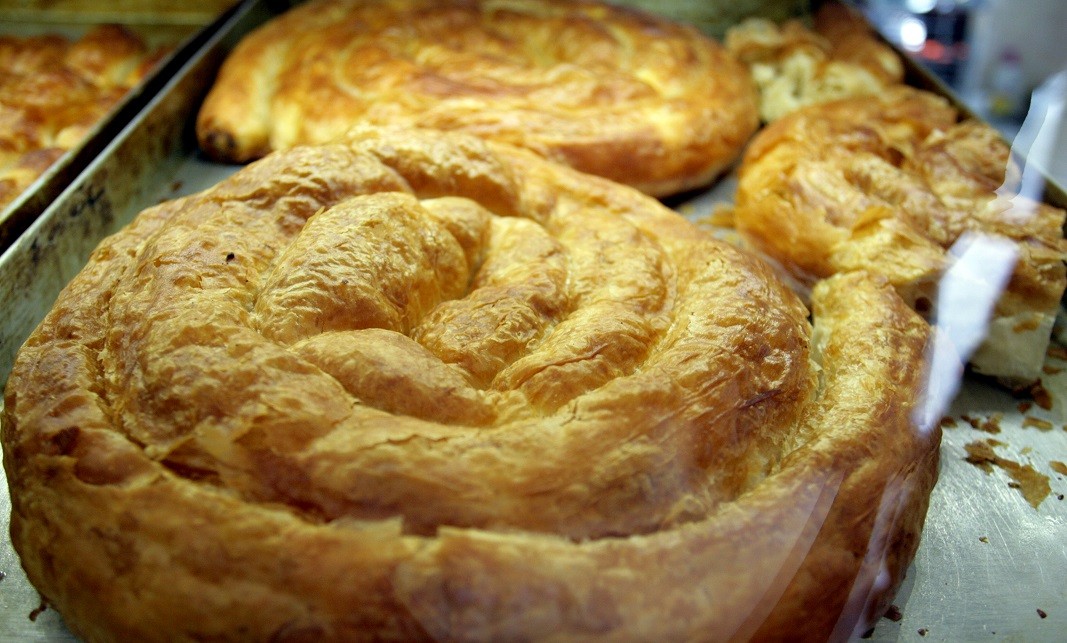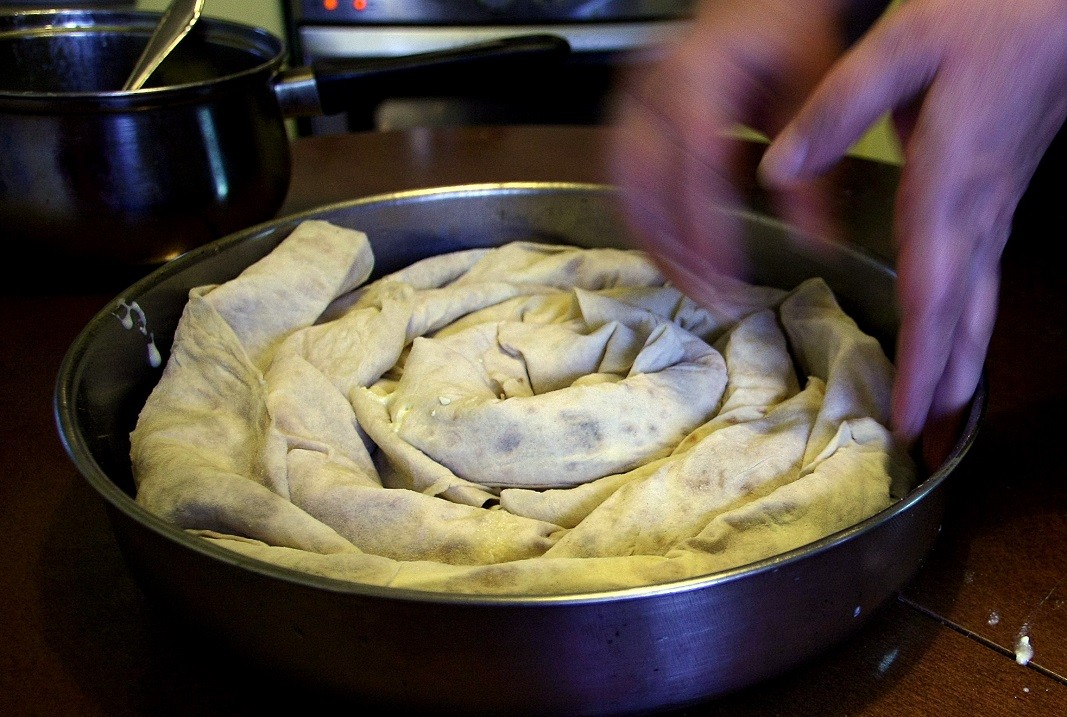 4
4
Food unites, food connects us all, and through food we get to know each other. But not all foods are equal. The world culinary encyclopaedia of traditional dishes Taste Atlas has catalogued both popular and forgotten dishes from around the globe. Bulgaria has a significant place on the world culinary map, but it seems that the delicious Bulgarian pastry dish "banitsa" is the newest discovery of the Taste Atlas authors.
"Banitsa can tell a lot about the region it comes from," ethnographic researcher Desislava Dimitrova says in an interview for BNR's regional radio station in Vidin.
„Bulgarian sharena sol (a signature Bulgarian spice, mixture of salt, herbs and spices) used to be at the top of the list in this Atlas, and now our filo pastry dish banitsa is gaining popularity. In Bulgaria, every region has its own varieties of banitsa", explains researcher Desislava Dimitrova. "For example, in the Ivaylovgrad region they prepare it with sesame and tahini. In the mountainous areas people prefer a banitsa with leafy vegetables, rather than the much richer banitsa with eggs and cheese. I would say that this is a Bulgarian regional, not national food."

The exact historical moment when Bulgarian women started to prepare banitsa is yet undetermined, but perhaps it was around the time people learned to use wheat flour. In order to roll well, the flour for the thin sheets of the filo pastry must have a fairly high gluten content, which is characteristic of wheat flour, Desislava Dimitrova explains.

"Judging by this I think that the banitsa is a relatively new dish in historical terms. Banitsa is not called that way anywhere else, except in our country, but this does not make it a uniquely Bulgarian dish. It is popularized by Bulgaria, but we must keep in mind that there are many masters of baked pies and pastries outside our borders. This in turn connects us with our neighbours here in the Balkans,“ the ethnographic researcher adds.
Pies and dishes of sheets of filo pastry with a filling inside such as the ingredients of the traditional banitsa, are prepared in a large area - from the Middle East to the end of the Balkan Peninsula in the west.
For the Bulgarians, however, the smell of a freshly baked banitsa is associated with home, family and coziness. It brings back childhood memories of grandma's kitchen, the researcher points out.
"Banitsa is the only Bulgarian dish for which it is essential to have company when you eat it. It is made at once in a large pan, and it is good to eat it still warm. That is why the pie is usually made for a holiday, so that people can get together and enjoy it,” explains Desislava Dimitrova.
“I associate the banitsa with my childhood. I used to live with my grandmother in Montana, who was a gourmet cook. The aroma of baked sheets of filo pastry and of pie in general always brings me back to that taste in my childhood. My Montana grandmother was originally from a village in the Balkan Mountains. My other grandmother was from Zlatia, which is a village on the fertile land on the banks of the Danube.

My Montana granny used to prepare banitsa with green leaves - saltbushes and docks, while the Zlatia granny used to say that the only true banitsa was the one with eggs and cheese. This is a proof that in the Northwest of Bulgaria they have different idea of the pie as a status signifier, i.e. “we from the flat field can afford our pie to be rich - with eggs and cheese, and those people who are having a harder time living in the mountainous areas must use greenery for the filling of their pie."
Compiled by Gergana Mancheva /interview by Victoria Topalska, BNR-Vidin/
English version: Elizabeth Radkova
The Bulgarian team is returning home with four medals from the Youth International Olympiad on Astronomy and Astrophysics (IOAA) , held in the Romanian city of Piatra Neamț, the Ministry of Education and Science announced. The competition brought..
The Association of Bulgarian Schools in America invites children from the Bulgarian community in North America to participate in a competition dedicated to November 1 - National Awakeners' Day, the organization announced on its..
Robert Joseph Miller, Bulgaria’s Honorary Consul in Nevada, was awarded the prestigious “Golden Laurel Branch” of the Ministry of Foreign Affairs for his exceptional merits in maintaining the diplomatic relations between the US and Bulgaria. The award..
Under the motto "Responsibility, Unity and Security" on November 5 and 6, 2025, a German-Bulgarian seminar for journalists and public..
The European Commission praise s Montenegro’s progress toward EU membership North Macedonia needs decisive action and reforms to begin..
Everyone knows that as soon as temperatures start going down it is pickle-making season. Making preserves at home is a time-honoured and widespread..

+359 2 9336 661
